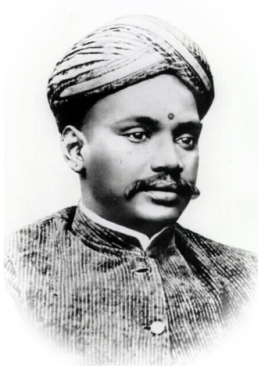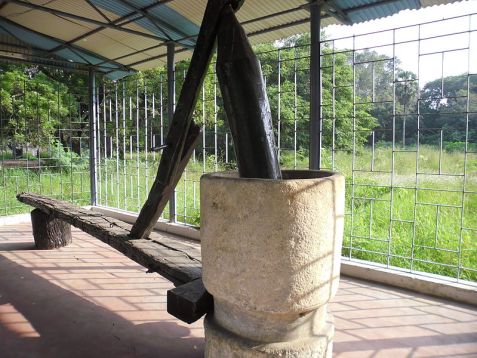Overruling objections raised by the Gujarat government and the fact that her bail hearing is pending in Gujarat High Court, the Supreme Court (SC) on Friday granted interim bail to controversial fraud-accused ‘activist’ Teesta Setalvad, arrested by the state police for fabricating evidence to target innocent people over the 2002 post-Godhra riots in Gujarat.
The SC took the decision despite a similar petition pending before the Gujarat High Court. It overruled a plea by Solicitor General Tushar Mehta, appearing on behalf of the Gujarat government, who said, “Please don’t make an exception…that will be a very very bad precedent”.
The SC bench of Chief Justice of India U U Lalit and Justices S Ravindra Bhat and Sudhanshu Dhulia directed that Setalvad be produced Saturday before the trial court concerned which shall release her on bail, ensuring that she walked out after just 2 months in jail. The rationale given by the court: Setalvad is a lady, offences alleged against her pertain to 2002, she was been interrogated for 7 days, HC ‘ought to have’ considered the prayer for release on interim bail during pendency of bail hearing.
The SC made it clear they are granting exceptional relief to Setalvad by saying that other co-accused in the case shall not take advantage of the relief granted to Setalvad, and their submissions shall be considered purely on their ‘own merits’.
On Thursday, the CJI had seemingly cast aspersions on the integrity of the Gujarat HC by asking why Setalvad’s bail plea had been posted for hearing on September 19, almost six weeks after notice was issued on August 3, and asked if this was the ‘standard practice’ in the HC. On Friday, SG Mehta told the bench that the message that had gone out from the CJI’s query was “as if the HC deliberately singled out the petitioner” and claimed it was not so. He said that HC uniformly did what it does with everyone, and produced statistics to show that on August 3, there were other matters in which notices were issued returnable by the HC even for October. He also referred to cases of ladies in which similar notices were issued by the court and said “it was not like the petitioner was singled out”.
SC judges may be unaware, but bail hearings coming up in 6 weeks would classify as lightening fast speed for ordinary undertrials, accused of far less serious crimes than Setalvad. For eg., in the BulliBai/SulliDeals apps case (which incidentally is nothing compared to the sickening objectification and fetishization ordinary Hindu girls are subjected to online), the 6 accused spent around 6 months in jail. A sadhvi and an Army officer rotted in jail, suffering unspeakable torture, for years on end, and our judiciary rejected their bail pleas and even requests to visit ailing family members.
The “bail is the rule, jail is the exception” norm seems to apply only for ‘special’ people like Teesta Setalvad and Md. Zubair – lakhs of ordinary undertrials, including those accused of petty crimes, continue rotting in jail for 2 years or more. Also, let’s not forget that Nupur Sharma was deemed ‘arrogant’ by the SC for approaching it for relief in the multiple cases filed against her across the nation, instead of approaching respective magistrates.
Leading Lutyens’ lawyer and a known Hinduphobe, Kapil Sibal, appearing for Setalvad, countered Mehta and alleged that HC had been ‘biased’ against Setalvad. Sibal has been outed by no less than ex-CJI Ranjan Gogoi as one of the leading bullies in the Lutyens’ legal ecosystem – who browbeats, cajoles and intimidates judges into giving favorable rulings.
Reacting sharply to Sibal’s insinuation, Mehta said: “This petitioner has maligned an entire state since 2002, has maligned all institutions since 2002, that this is not trustworthy judge…High Court of Gujarat is not trustworthy. And this is one more. Please stop. We are before the Chief Justice’s court. This is an irresponsible statement…Sometimes the position of HC judges is precarious. They are abused left, right, and centre but they cannot defend themselves”.
It bears mentioning that SC has repeatedly refused to move cases out of WB, saying it would show “loss of faith in the Calcutta High Court”. This, despite clear evidence of Mamata Banerjee misusing the state machinery to intimidate her opponents and even judges. In March, Calcutta HC Judge Abhijit Gangopadhyay had sought the CJI’s intervention after his orders in the WB school recruitment scam were repeatedly quashed/stayed. A few weeks back, Calcutta HC witnessed unprecedented scenes when lawyers defending TMC members accused in the recruitment scam got into a slanging match with Judge Abhijit Gangopadhyay and openly cast aspersions on him.
Even SC judges from West Bengal have recused themselves from hearing post-poll violence and other cases from the state, such is the climate of fear that Mamata and her Lutyens’ allies have creatd! Ex-WB Governor Dhankar has repeatedly bemoaned the utter break-down of law & order and all democratic norms in the state, but none of this has mattered to SC. Moreover, when Calcutta HC ordered post-poll violence in the recent Contai municipal polls to be probed, the SC bench of Chandrachud and Kant struck down the HC order saying it would “set a dangerous precedent”!
SG Tushar Mehta added the state of Gujarat always had the material against Setalvad but did not use it as the SC was seized of the matter. He said that Setalvad did not cooperate during interrogation, refusing to answer questions. Setalvad had alleged that a woman was raped in presence of her own father-in-law but the woman had denied this, he added. The conspiracy to malign the government goes beyond Setalvad and involves other powerful people, Mehta said.
Veteran Congress leader P Chidambaram, who held important ministries like Home and Finance in the UPA regime and who has in the past labelled Sanatana (Hindu) Dharma a ‘toxic ideology’, welcomed the interim bail for Setalvad.
SC refuses probe into genocide Of Kashmiri Hindus, Sikhs
In another ruling on Friday, the Supreme Court asked NGO ‘We the Citizens’ that raised the issue of the genocide of Hindus and Sikhs in Jammu and Kashmir during 1989-2003 to make a representation before the Centre and the ‘appropriate authority’ for a Special Investigation Team (SIT) probe.
“This is purely in the domain of the Executive,” a Bench of Justices B. R. Gavai and C. T. Ravikumar observed orally. The petitioner’s counsel said at the time the Ranbir Penal Code was in vogue, but the situation has changed since the abrogation of Article 370 in 2019 and the Indian Penal Code and the Code of Criminal Procedure Code was enforced now.
The plea prayed that a SIT should be formed to identify those who aided and abetted the genocide of the Hindu and Sikh communities in the erstwhile state. It stated that the police and other State machinery at the time were so influenced by the leadership of the ruling political parties that no legal action was taken against the perpetrators and masterminds of the religious killings and exodus. A number of first information reports registered at the time were not pursued to their logical conclusion even as it has been over 30 years since the ethnic cleansing, the plea stated.
“The dastardly genocide and exodus of Kashmiri Hindus and Sikhs which happened in 1989-90 in the Kashmir valley is a glaring example of complete failure of Constitutional machinery in preventing the genocide and protecting the life, property of the Kashmiri Hindu and Sikh in the Kashmir valley. Therefore, the Fundamental Rights guaranteed under Article 14, 19 & 21 of the Constitution of India were openly violated,” the petition said, while also referring to books like “My Frozen Turbulence in Kashmir” by then J&K Governor Jagmohan and “Our Moon Has Blood Clots” by journalist Rahul Pandita.
In 2017, a bench of then Chief Justice J S Khehar and Justice D Y Chandrachud had rejected an appeal by Kahsmiri Pandits to probe the genocide, shockingly rebuking the petitioners, “You (petitioner) sat over it for last 27 years. Now tell us from where the evidence will come.”
A few days after declining to probe the Kashmiri Pandit massacre, the Supreme Court had ordered scrutiny of SIT’s decision to close 241 cases related to anti-Sikh riots in 1984.
Kashmiri Pandits contested these double standards. “If the court can scrutinise each case of anti-Sikh riots which happened 33 years ago and order re-opening of the closed ones, why can they not order a probe into the killings of Kashmiri Pandits which took place 27 years ago?” asked Vikas Padora, the counsel for Roots in Kashmir.
Recently, the J&K High Court has reopened the closed 2003 Nadimarg case in which 24 Kashmiri Hindus, including 2 toddlers and 11 women, were massacred by Islamic terrorists.
The disturbing inconsistency and apparent anti-Hindu bias of our higher judiciary is now becoming clear to the citizenry at large.













